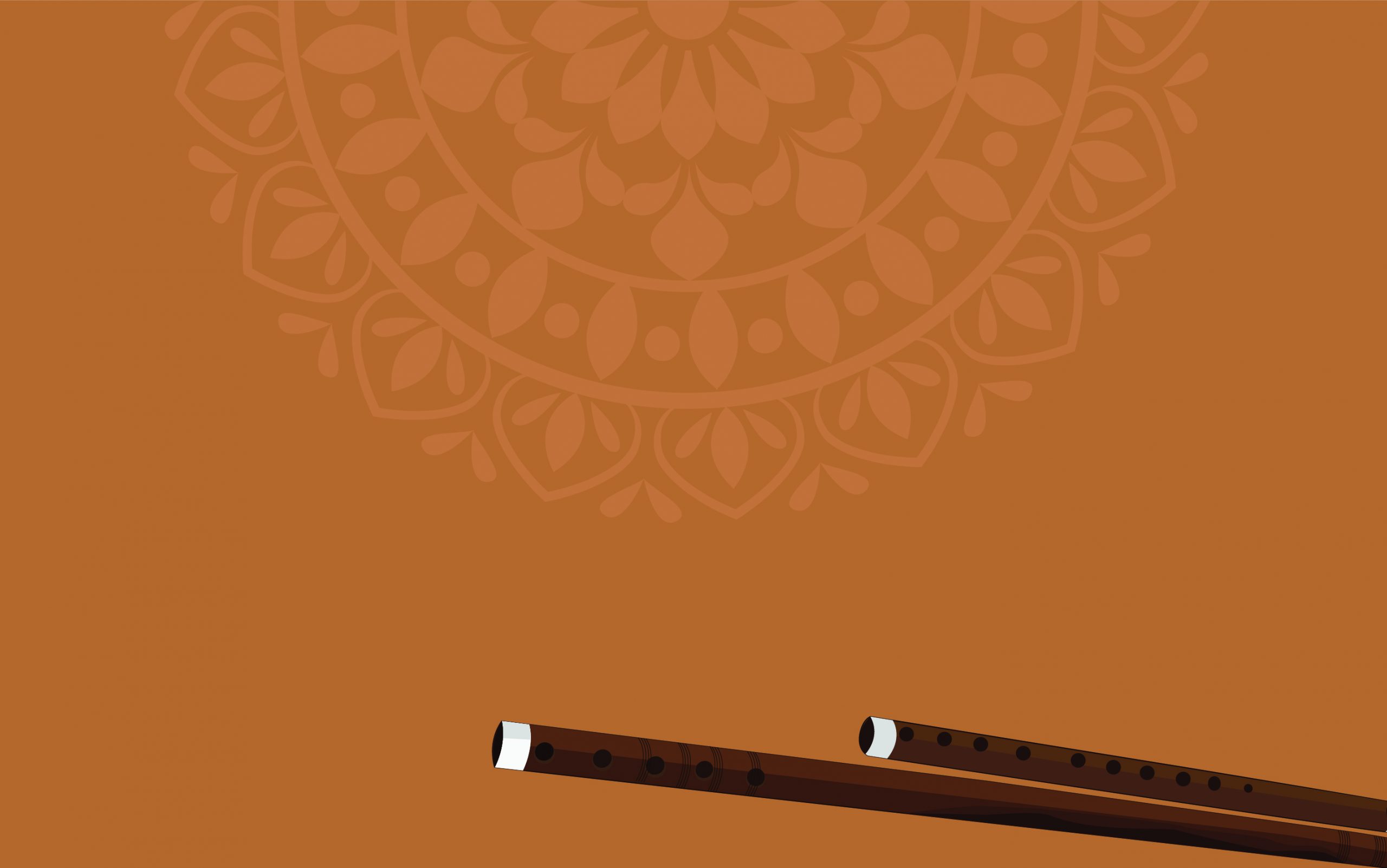


Alghoza was named as Al-joza (with ‘j’ sound not the ‘gh’ sounds) in early times in Mesopotamia. But the name was modified as it reached local areas, like Balochistan and Sindh. It began to be called Alghoza and was written with ‘gh’ and pronounced with the ‘ghaen’ sound.”
Alghoza is a wind instrument, which consists of two flute-shaped recorders; one of them produces high or heavy notes (sopranos) whereas the second generates thin or low notes (altos). Normally, the alghoza-nawaz (alghoza player) and music experts call the former a female sound and the latter a male sound.
The male sound or note continuously keeps playing with the same pitch without any gap, while the female sound or note fluctuates, varying in pitch. The male flute, with a fat nib at the top, is 2.5 feet long and the female flute, with a slender nib, is 1.5 feet in length. Each flute has six holes.

The origins of the alghoza are unclear. Some say it originated in Iran and descended, with some modifications, to Balochistan and then to Sindh. Others claim it has Punjabi origins. Contrary to these opinions, according to research conducted by Professor Zulifqar Ali Qureshi —the only Sindhi to hold a PhD in musicology — the alghoza is 9,500 years old. According to a PhD thesis by Malhaar, The History of Alghoza, it originated in Mesopotamia, Egypt, snaking down into Persia, Sindh and Rajasthan after modifications. Some Mesopotamian archaic paintings contain a musical instrument with twin recorders similar to an alghoza.
In old times, grazers played it while their animals grazed. It would not only help them while away the time they spent herding their flocks of sheep or cattle, but unlike the flute —whose notes are commonly perceived to connote sad, melancholy music — the alghoza’s music represents happiness.
It is believed that, initially, the alghoza was played in the wild moorlands, and was popularised in Sindh by the blind Shah Muhammad. He was discovered by Nabi Bakhsh Khan Baloch of Mirpur, Bathoro, before Partition. Khameeso Khan Jhinjhi — a protégé of the great alghoza-nawaz Shah Muhammad “nabeena” — Misri Khan Jamali, Allah Bachayo Khoso, Abdul Karim Gopang and Uris Faqir are among those who earned great admiration and respect in Sindh for their skilful playing.
Two types of woods are used in the preparation of an alghoza. The kirar(Capparis decidua) wood is used for the flute producing low notes, and taalhi (Dalbergia Sissoo) wood is for the one producing high notes. A nib or a reed is attached at the top of each flute with beeswax, which works as gum. The beeswax is heated and the reed or nib is dipped into it and then fixed on to the top of the flute. It is then left to dry under the sun till it congeals to hold the reed and the flute together.